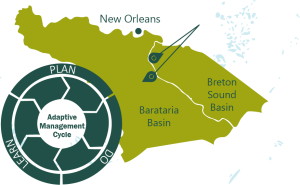How does adaptive management inform coastal restoration?
A primary goal of coastal restoration is to build and sustain as much land as possible, but there are key uncertainties regarding salinity changes, water levels, and changes to fish and wildlife populations. These uncertainties will need to be monitored and adapted to over time to ensure changing conditions are taken into account and adjusted for accordingly through management actions – minimizing negative impacts while maximizing land building and other management objectives. This project will unfold over time to allow for continuous learning and adjustment across many AM cycles.
PLANNING
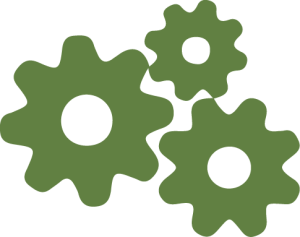
This phase involves assessing what is needed and designing the projects to achieve success.

When making a delicious gumbo, we start with a basic family recipe that includes ingredients, steps, and notes on what to look for when cooking.
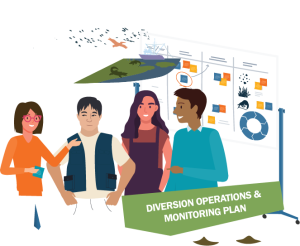
When it comes to sediment diversions, this involves decision-makers planning how to build a beautiful delta.
DOING

This phase is about putting our plans into motion and monitoring changes to track project outcomes.

Next, we make groceries, cook up our gumbo and do some taste testing along the way.
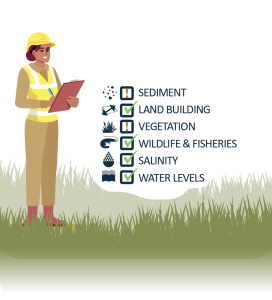
This involves building and operating diversions and monitoring their effects along the way.
LEARNING
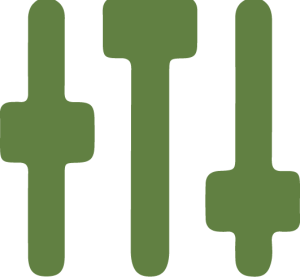
This phase involves evaluating results and making adjustments as needed.

For our chef, learning means serving to friends and family and collecting feed-back to improve the recipe over time.
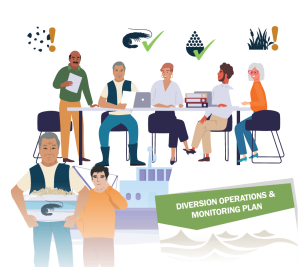
Managers apply new information from monitoring to adjust operations over time to achieve the best results.
How are adaptive management goals determined?
 Robust adaptive management takes into account multiple perspectives by bringing a variety of stakeholders, agencies, scientists and engineers to the table early on to agree on goals, objectives and decision-making processes.
Robust adaptive management takes into account multiple perspectives by bringing a variety of stakeholders, agencies, scientists and engineers to the table early on to agree on goals, objectives and decision-making processes.
By encouraging consensus through collaborative governance structures, adaptive management can support ecological, economic and community needs simultaneously.
Using adaptive management to inform the Mid-Barataria Sediment Diversion
 Louisiana is beginning to develop an adaptive management plan for the Mid-Barataria Sediment Diversion, a large-scale coastal restoration project. The plan will be a crucial guidebook to effective operations of the sediment diversion in the future.
Louisiana is beginning to develop an adaptive management plan for the Mid-Barataria Sediment Diversion, a large-scale coastal restoration project. The plan will be a crucial guidebook to effective operations of the sediment diversion in the future.
The sediment diversion is being constructed in an already dynamic and ever-changing deltaic environment with innate uncertainties. But climate change and sea level rise add a layer of complexity to understanding the future of the Louisiana coast, both with and without the construction and operation of sediment diversions.
In Louisiana, there is no time to wait for perfect data, which is impossible to achieve. But adaptive management allows practitioners to take much needed action today while building a knowledge base for future decision-making, ensuring the overall goals for building and sustaining land are achieved, while also factoring in the needs of communities, fisheries, navigation, and other economic and social concerns.
Learn more about the Mid-Barataria Sediment Diversion here.
Adaptive Management Brings People Into the Process
Building a sustainable delta takes careful planning and strategic operations, but coastal managers and scientists have a lot of tools at their disposal.

Adaptive Management graphics: Credit: ESSA Technologies, Ltd.
AM will ensure they achieve diversions’ primary goal of land building, while also considering factors important to the communities, wildlife, and industries of the delta. This approach brings people into the process, providing you with access to information and opportunities to engage.
SEDIMENT DIVERSION READING LIST
What Role Does Adaptive Management Play in Restoring Our Coast?
Climate change will force us to make tough decisions. Adaptive management can help.
Using adaptive management to help restore coastal Louisiana.
For inquiries, please fill out the form below.
Resources
Adaptive Management inforgraphic in:
English | Spanish | Vietnamese
Adaptive Management video in:
English | Spanish | Vietnamese
*Translated version available on request.
